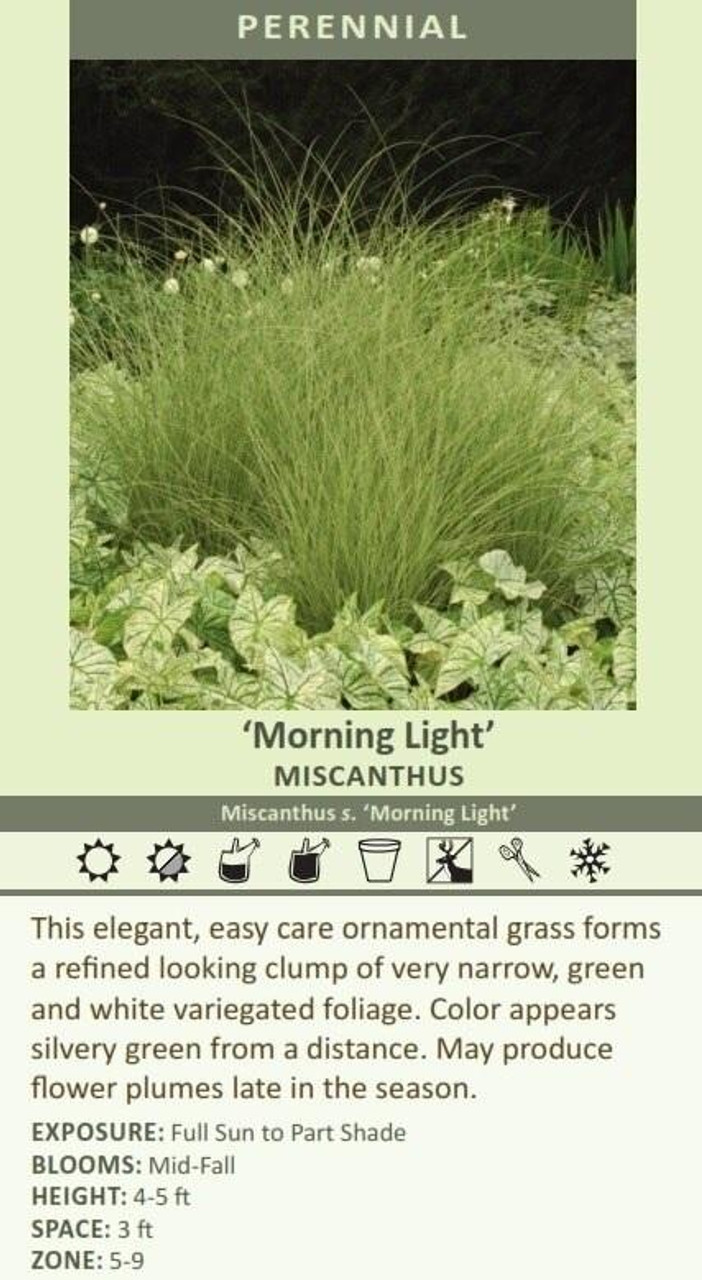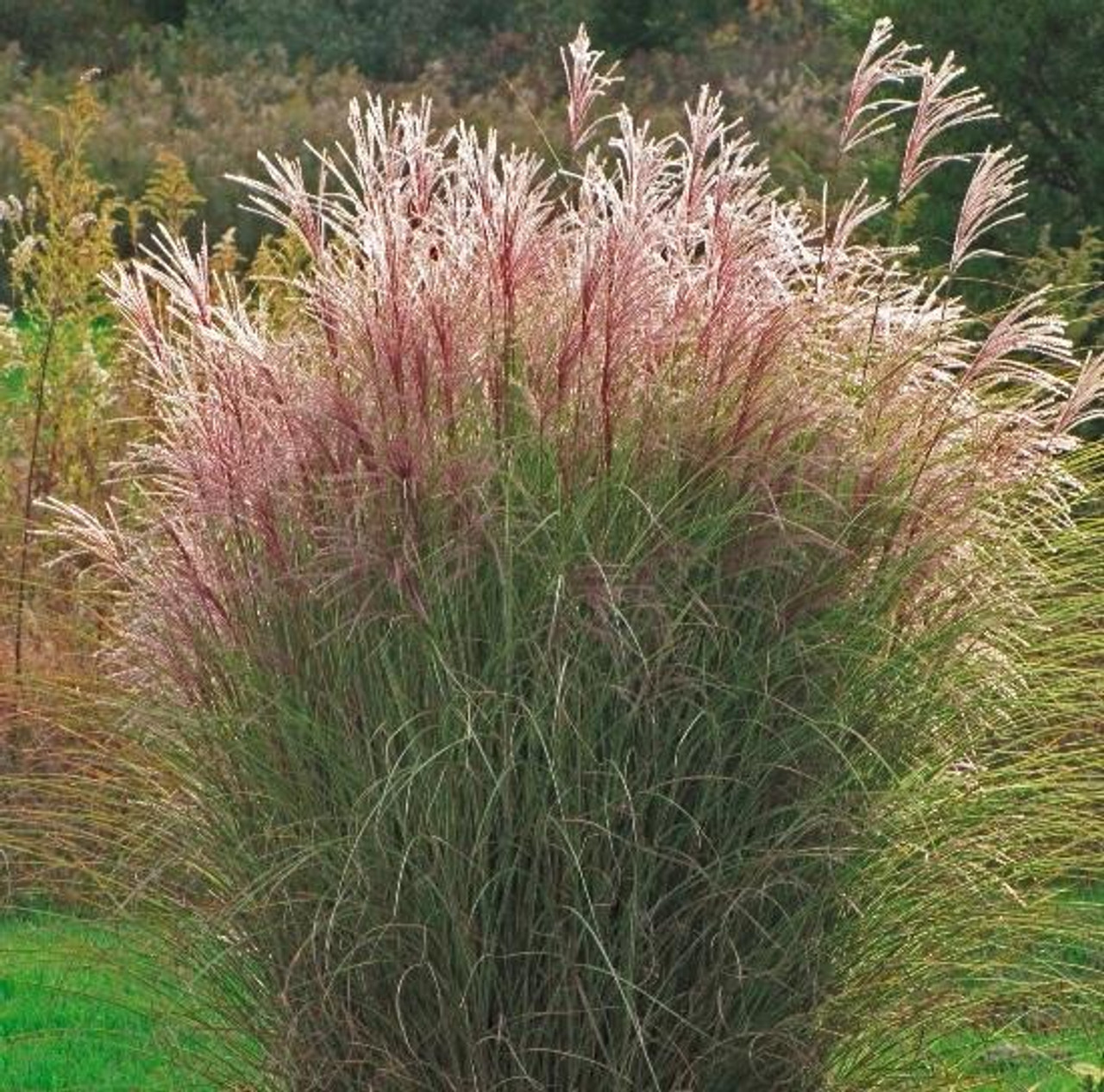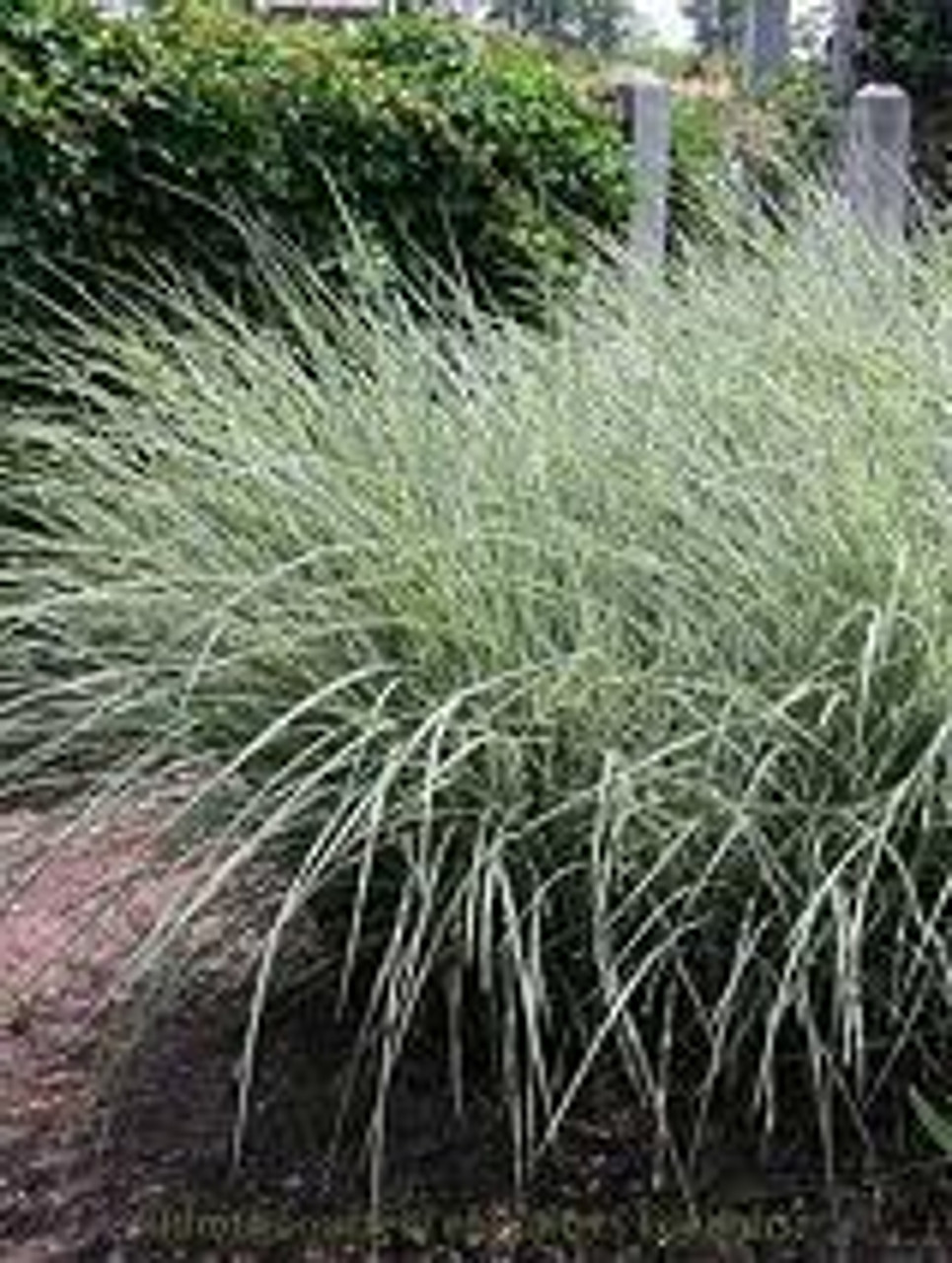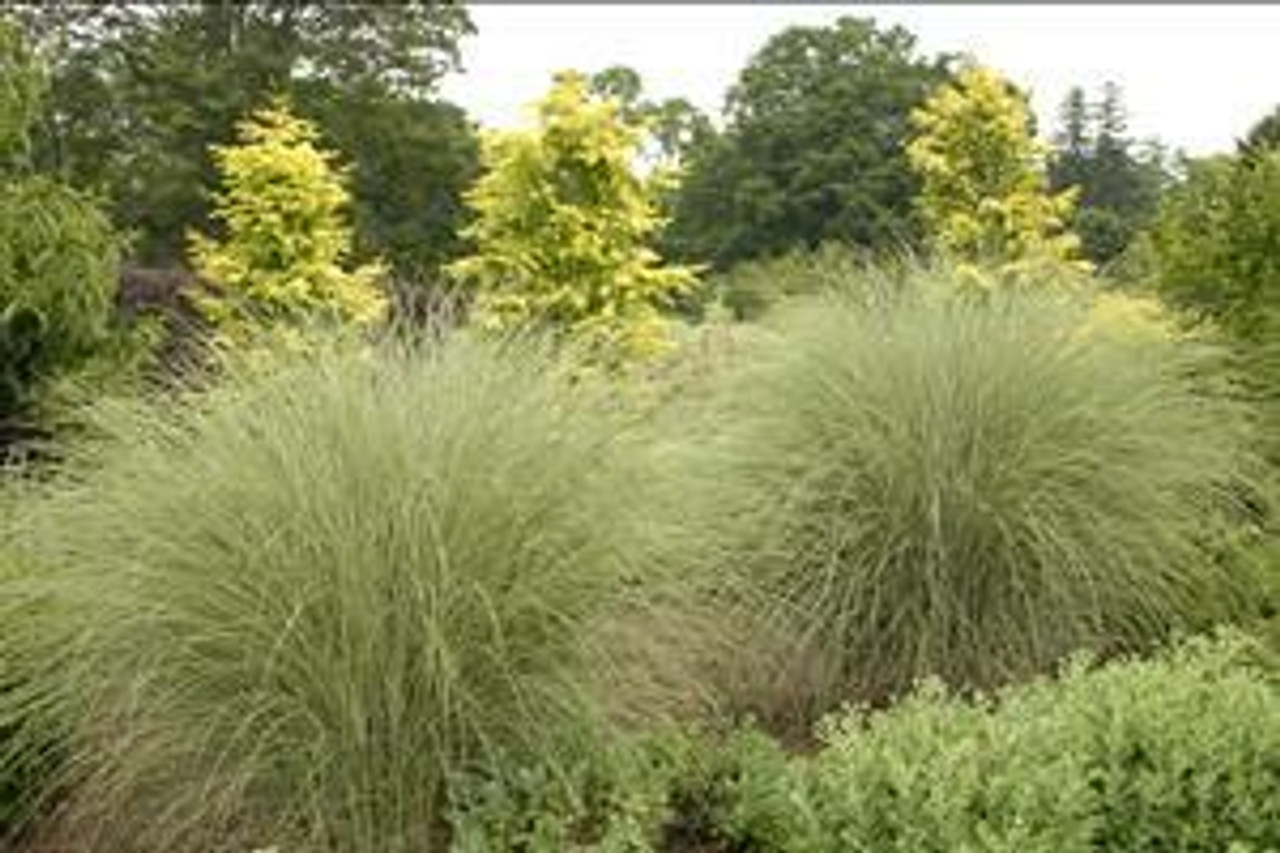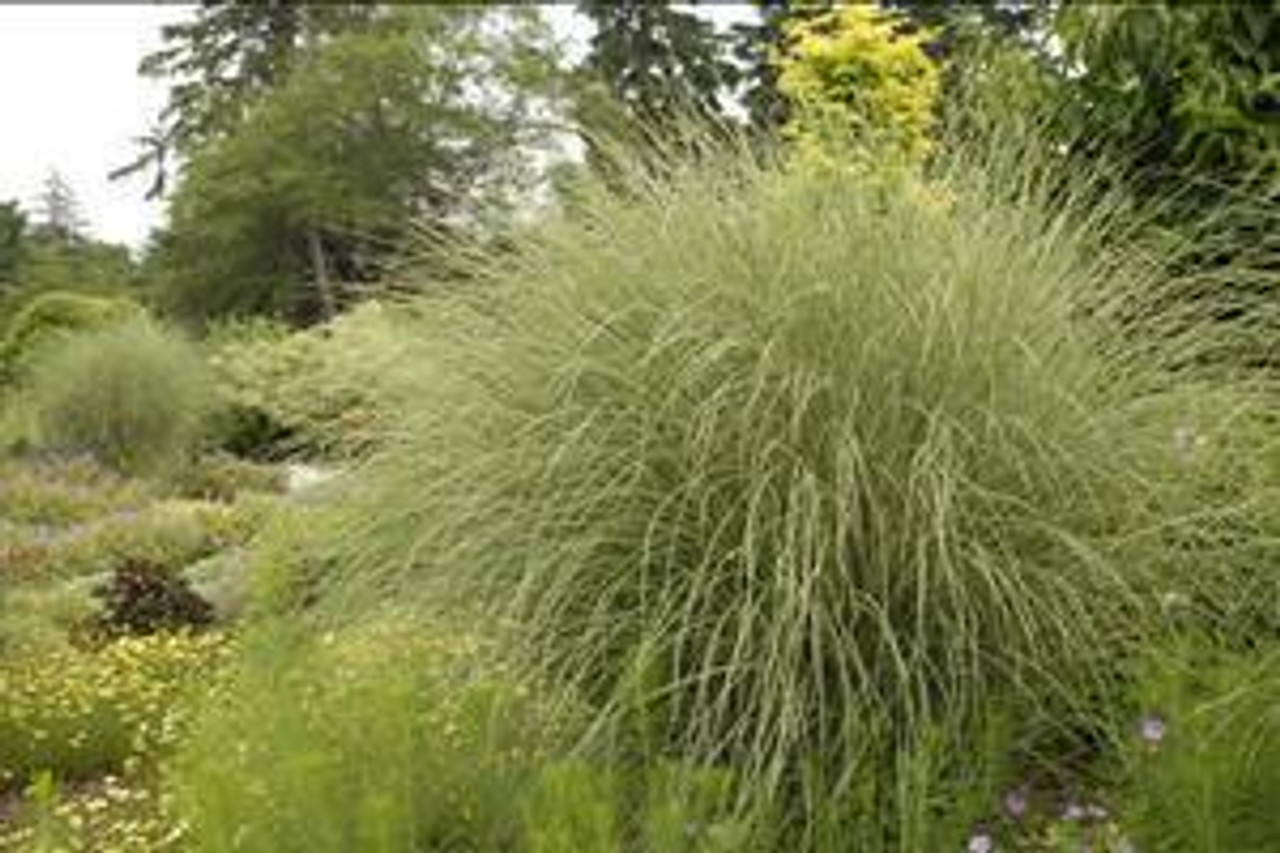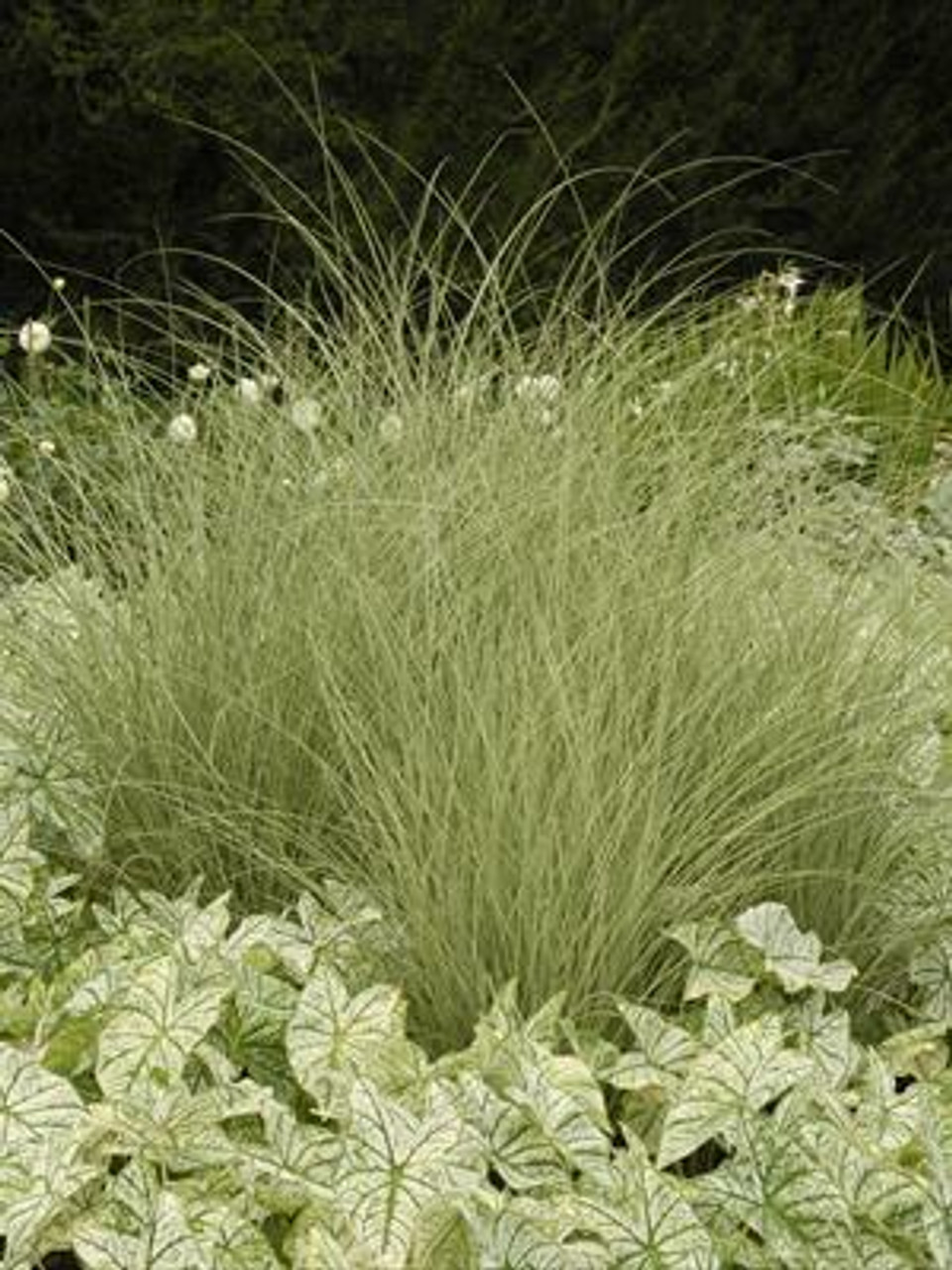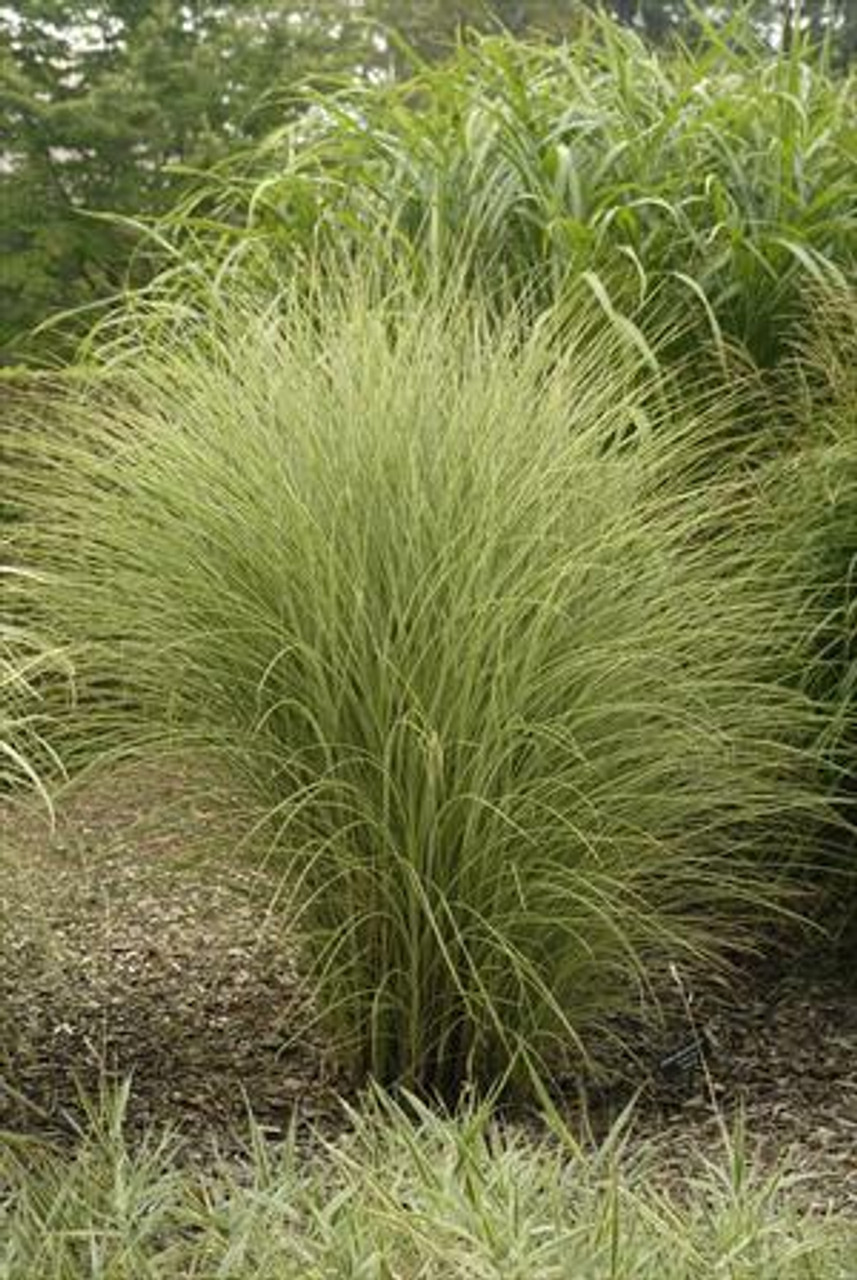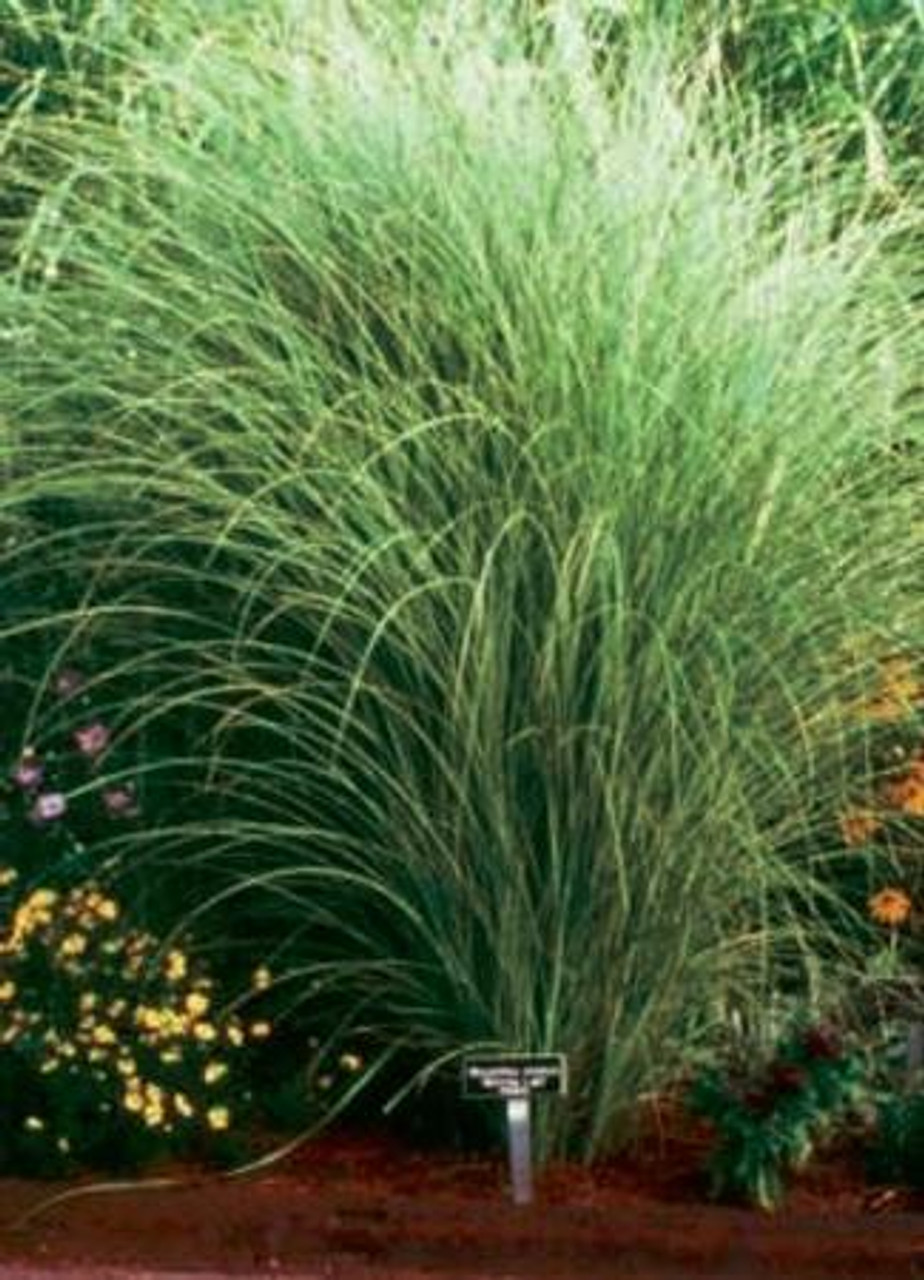Product Description
Miscanthus sinensis 'Morning Light' (30)ct Flat
Common Name: Grass-Ornamental, Miscanthus
An especially refined and elegant ornamental grass. Fine leaf blades are green with clean, paper-thin, white margins that give the plant a silvery cast when viewed from a distance. This plant is luminous when backlit by the early morning or late afternoon sun. It is prized for its rounded habit that never flops. Many consider 'Morning Light' to be one of the finest cultivars of Miscanthus.
This requires a very long, hot growing season to be able to produce flowers. When it does, they are spectacular reddish bronze plumes that appear in late fall. As the seeds mature, they become cream colored and fluffy; they make wonderful accents to the tan winter foliage.
Easy to grow and is a good choice for beginners, Miscanthus will grow in most any soil, from loose sand to heavy clay, and does not require good drainage. Grow this in full sun except in warmer regions where some afternoon shade is best. Fertilization is not necessary.
Miscanthus is versatile from a design standpoint; it can be used as a specimen, for massing or screening, in large containers, or at the pond's edge. Plant this where its wonderful winter interest can be enjoyed. Attributes: Border plants, Containers, Cut flower or foliage, Dried flower or seed heads, Mass planting, Rock gardens, Specimen or focal point plant, Deer resistant.
Royal Horticultural Society's Award of Garden Merit 2001
Not available for shipment to NY
Height: 4.0-5.0 Feet
Spread: 3 Feet
Hardiness Zones: 5,6,7,8,9
Flower Color: Red shades
Foliage Color: Variegated
Full Sun (> 6 hrs. Direct Sun) - Part Shade (4-6 hrs. Direct Sun)
Average to Consistent Water Needs
Poor to Average Soil Quality
Bloomtime: Mid Fall
Deer Resistant
Seasonal Interest: Dried Seed Heads, Fall Color
Growth Rate: Medium
Border Plant, Container, Cut Foliage, Dried Flower, Easy To Grow, Mass Planting, Salt Tolerant, Specimen, Focal Point
Miscanthus sinensis 'Morning Light' is a graceful and elegant ornamental grass that adds a touch of airy beauty to gardens. It is known for its fine-textured foliage, silvery appearance, and delicate plumes. Here is a closer look at its captivating features:
Appearance:
- Silvery Foliage: 'Morning Light' features narrow, green blades with thin, white margins and midveins. This variegation creates a shimmering, silvery effect when the wind blows through the foliage, adding a touch of magic to the garden.
- Reddish-Bronze Plumes: In late summer to early fall, airy, reddish-bronze plumes rise above the foliage, adding a soft, billowing effect that lasts into fall.
- Upright Habit: It has an upright, arching growth habit, forming a graceful clump that reaches about 4 to 6 feet tall and 3 to 4 feet wide.
Growing Conditions:
- Sunlight: Thrives in full sun (at least 6 hours of direct sunlight per day) for the best color development and flowering. It can tolerate some light shade, but the variegation and fall color may be less intense.
- Soil: Adaptable to a wide range of soils but prefers well-drained conditions.
- Hardiness Zones: Suitable for USDA hardiness zones 5-9, making it a versatile choice for many gardeners.
Care:
- Low Maintenance: 'Morning Light' is a relatively low-maintenance grass.
- Cutting Back: Cut back the foliage to the ground in late winter or early spring before new growth emerges.
- Dividing: Divide clumps every few years in spring to maintain vigor and prevent overcrowding.
Uses:
- Borders: Adds height, texture, and movement to borders and beds.
- Specimen Plant: Can be used as a focal point in the landscape, especially when backlit by the morning sun.
- Mass Plantings: Creates a beautiful and calming effect when planted in groups.
- Screens and Hedges: Can be used to create a loose screen or hedge for privacy.
- Naturalizing: Its graceful form makes it suitable for naturalizing in areas where it can spread.
Additional Information:
- Deer Resistant: Deer tend to avoid Miscanthus.
- Attracts Wildlife: The seed heads provide food and shelter for birds and other wildlife.
- Non-Invasive: 'Morning Light' is less invasive than some other Miscanthus varieties, making it a good choice for smaller gardens.
- Award Winner: It has received the RHS Award of Garden Merit.
If you are looking for a beautiful and elegant ornamental grass with fine-textured foliage, a silvery appearance, and delicate plumes, Miscanthus sinensis 'Morning Light' is an excellent choice. It is a versatile and low-maintenance plant that will add a touch of magic to any sunny garden.
Thirty (30) plants per flat (or tray). Approximate Plug Measurements: 4.25 inches deep x 2 inches wide.
Other Details
The most important part of the plant is its root system. Healthy roots are the foundation of a healthy, vibrant plant. The type of plug container used is based on the specific needs of the plants. Perennials offered as bare root traditionally perform better when planted as bare root.Planted in a specialized mix, potted plants have well established root systems. Top growth stage will vary depending on the current life cycle and time of year when shipped. In Winter and early Spring dormant plants may be shipped. Dormant plants may be planted right away, even before the last frost date.
Most bare root varieties are field grown for at least one season, though Hemerocallis and Hosta are grown for two seasons. The bulk of the soil is removed during the harvesting process and the tops of most varieties are trimmed back to the crown. They are graded, packed in shredded aspen or sphagnum moss and stored in freezers until ready to be shipped.
See our Container Sizes and Bare Root Perennials pages for more information.
Plant information and care is provided in the Overview section, Plant Genus Page and general information is provided in the Planting Care & Guides. Additional questions can be asked on each Plant page.
Plant Spacing: Using the maximum mature spread or width of a plant to guide spacing, ensures space to grow to full size. To fill an area sooner, plant them closer together. Just remember, future thinning or transplanting may be needed.
Water: Keep a close eye on newly planted perennials, especially throughout the first growing year. Most early plant loss is due to too much or too little water!

